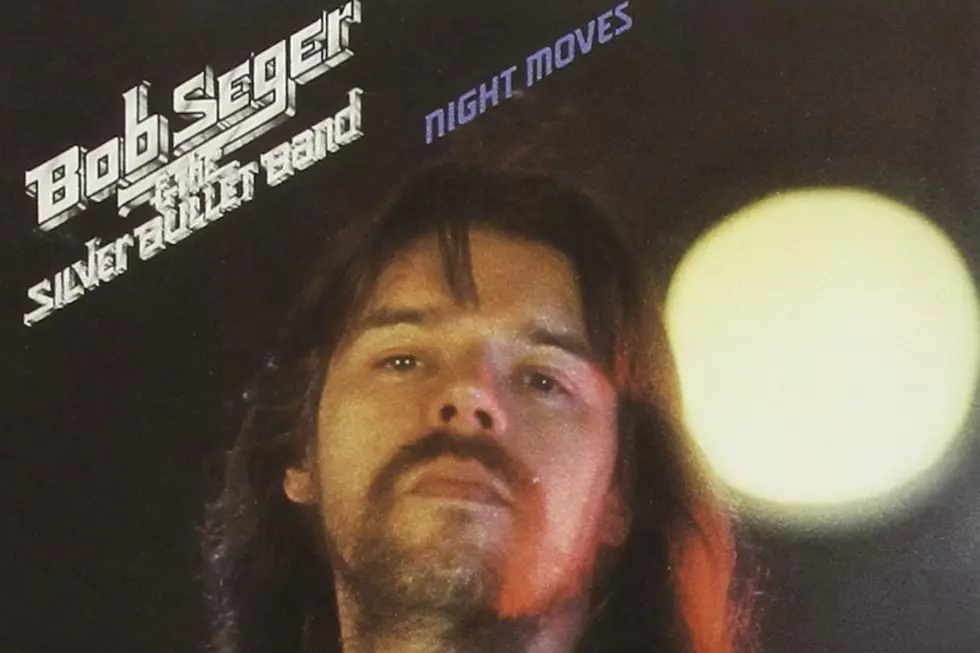
How Bob Seger Finally Became an Overnight Star With ‘Night Moves’
These days Bob Seger is often thought of a poor man’s Bruce Springsteen. Not only is the accusation wrong, it’s ignorant.
A year after Springsteen broke big with Born to Run, Seger released Night Moves. His first studio LP with the Silver Bullet Band, Night Moves arrived on Oct. 22, 1976. Aching with an emotional hangover from a ’70s summer, the record became a perfect soundtrack to fall, any fall. And Seger knew as much: On the title track, he sings, “Ain’t it funny how the night moves / When you just don't seem to have as much to lose / Strange how the night moves / With autumn closing in.”
For Seger, the set could have ushered in the autumn of his career. The Michigan singer-songwriter turned 30 while writing and recording the album. He had spent years becoming a Midwestern legend with live shows and singles blazing up the local charts, but had yet to break nationally. Night Moves changed all that. The record went on to go six times platinum (and sell as many copies of Born to Run). It also put Seger on the path toward becoming an icon.
In early 1977, The British Encyclopedia of Rock described him as “one of the great lost figures of rock ‘n’ roll’” (c’mon, lost at 31?) and that he “has always seemed destined to miss out on the big time.”
“Well, it turns out that Seger has the last laugh,” Larry Rohter wrote in the Washington Post on Aug. 7, 1977. “As a result of Night Moves, he has suddenly become one of the hottest attractions in pop music. Virtually every song on Night Moves has a hunger, toughness and drive that is almost palpable, and in the lyrics Seger has written for the powerful surging melodies can be found a continuing fascination with the underdog, the loser and the oppressed.”
Shortly after the record’s release, at a show in Buffalo, Seger told his hometown paper, “It’s kinda nice. I actually got mobbed last night by some people after the show. First time that’s happened outside of Detroit.” Of course, when Night Moves made Seger an “overnight sensation,” older fans let new ones know they had been missing out on for a long time.
“The word is that rock singer Bob Seger has arrived. Arrived? For chrissakes, the man has been playing professionally for half his life already since his first gigs as a sixteen year old in 1960,” Steve Weitzman wrote in Circus on May 26, 1977. “If anything, he’s been a local legend in his hometown of Detroit and most of the Midwest for almost a decade, amazingly having three of the four biggest selling albums in the history of the Detroit market. … Bob Seger hasn’t arrived. The rest of the country is just waking up.”
What they woke up to was a masterpiece of American rock ‘n’ roll. Thematically and sonically, Night Moves has a lot in common with Born to Run and Jackson Browne’s best ’70s albums. It’s about trying to hang on to the beauty of youth as you’re dragged into the mediocrity of middle age. With a kind of mission statement, Seger opens the set with “Rock ‘n’ Roll Never Forgets” singing: “Sweet 16’s turned 31 / Feel a little tired, feeling under the gun / Well, all Chuck's children are out there playing his licks / Get into your kicks / Come back baby / Rock ‘n’ roll never forgets.”
“I was influenced in the early '70s by the narrative songwriters that came along – the James Taylors and the Kris Kristoffersons and the Jackson Brownes,” Seger told the Austin American-Statesman. “I guess I was real inspired by the way they wrote, so a lot of our hits ended up being very narrative. There's a lot of stuff that we do that is pure energy, too, but those weren't the hits.”
No, but those non-hits came straight from Chuck Berry riffs and made for some ace album cuts: Check out the sleazy, sloppy fun of “Sunspot Baby.”
The pure energy comes by never straying far from the bar. Seger's backing musicians – the Silver Bullet Band and the Muscle Shoals Rhythm Section – can get grandiose (see “Sunburst,” which manages to recall “Dear Prudence,” “Thunder Road” and epic Led Zeppelin all at once). But they’re happier entertaining rowdies at a road house.
Night Moves was Seger doing Springsteen slumming it with ZZ Top, it was Jackson Browne getting groovy with the Allman Brothers. Like so many American voices, Seger just wanted to marry Bob Dylan (or John Steinbeck) and ’50s rock. His version just happened to be Dylan and Berry after a six-pack of Miller High Lifes and a soft-pack of Marlboro Reds.
Take “Main Street,” the album’s second biggest single (after the title track). Seger is actively lusting after an exotic dancer in his hometown. Other songwriters make waitresses, college girls or prom queens the objects of their affection. But Seger writes a ballad about a dancer in a downtown dive.
And guess what? He can’t even pretend he’s going to save her. At the end of the song he doesn’t run away with her or even try. He just loiters around the corner hoping to see her walk on by. Seger always did love those beautiful losers.
Top 100 Live Albums
More From WSHK-WSAK 102.1 & 105.3 The Shark









